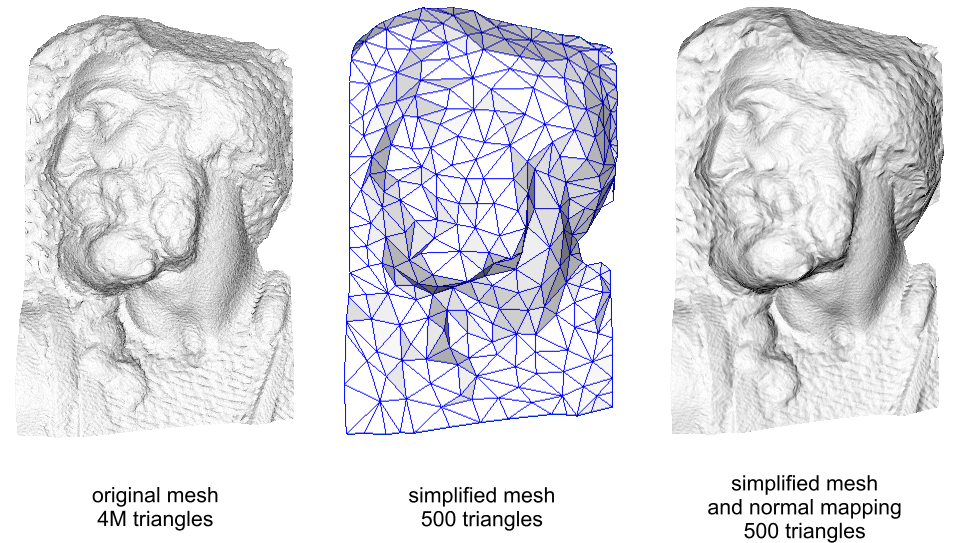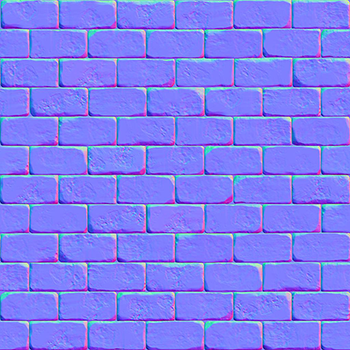Bump Maps:
Bump maps create the illusion of depth on the surface of a model using a very simple lighting trick. No additional resolution is added to the model as a result of a bump map. Typically, bump maps are grayscale images that are limited to 8-bits of color information. That’s only 256 different colors of black, gray or white. These values in a bump map are used to tell the 3D software basically two things. Up or down. When values in a bump map are close to 50% gray, there’s little to no detail that comes through on the surface.

Displacement Maps:
Displacement maps Physically displace the mesh that they are applied to, in order for detail to be created based on a displacement map, usually the mesh must be subdivided or tessellated so real geometry is created. Like a bump map, a displacement map consists of grayscale values. Creating all that additional geometry in real time is extremely difficult and hard on your system.


Normal Maps:
Normal maps can be referred to as a newer, better type of bump map. As with bump maps, the detail they create is also fake. There’s no additional resolution added to the geometry in your scene. In the end, a normal map does create the illusion of depth detail on the surface of a model but it does it differently than a bump map. A bump map uses grayscale values to provide either up or down information. A normal map uses RGB information that corresponds directly with the X, Y and Z axis in 3D space. This RGB information tells the 3D application the exact direction of the surface normals are oriented in for each and every polygon. The orientation of the surface normals, often just referred to as normals, tell the 3D application how the polygon should be shaded.



